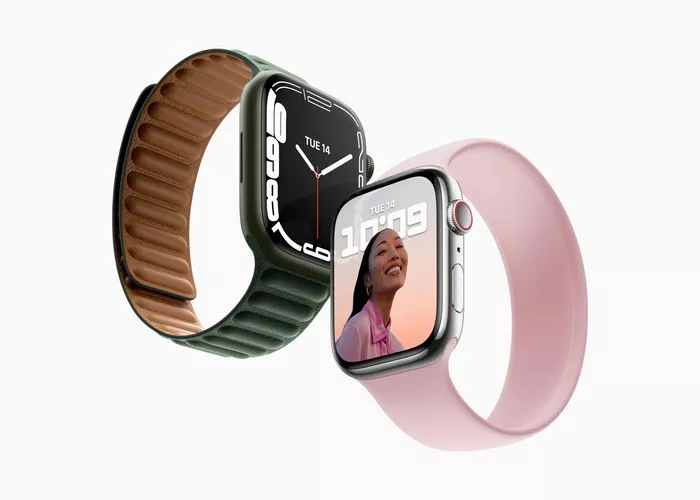The Apple Watch has evolved through multiple generations, each introducing new features and improvements. Choosing the best Apple Watch for your needs can be a daunting task, considering the range of options available. In this comprehensive guide, we break down the strengths and unique features of two prominent models: the Apple Watch Series 9 and the Apple Watch Ultra 2. Whether you’re upgrading from an earlier version or diving into the Apple Watch ecosystem for the first time, understanding the distinctions between these generations is crucial.
I. Apple Watch Series 9: A Focus on Always-On Display and Advanced Health Tracking:
For users upgrading from an earlier Apple Watch model, the Series 9 presents a compelling option. One standout feature is the always-on display, providing constant visibility of the watch face without the need to raise your wrist. This enhances convenience and accessibility, especially in situations where subtle glances at the watch are preferred.
The Series 9 also elevates health tracking with more advanced capabilities. Whether you’re monitoring your heart rate, tracking your sleep, or measuring your blood oxygen levels, the Series 9 offers an array of health and wellness features. The integration of these capabilities makes it a suitable choice for users prioritizing comprehensive health tracking in their wearable device.
II. Apple Watch Ultra 2: The Pinnacle of Screen Size, Durability, and Battery Life:
On the other end of the spectrum, the Apple Watch Ultra 2 takes center stage for users who crave the biggest and brightest screen. The expansive display not only enhances readability but also provides a more immersive experience when interacting with apps, notifications, and fitness tracking data. The Ultra 2’s screen is a visual feast, catering to those who prioritize a captivating visual interface.
Durability and battery life are other key factors that set the Ultra 2 apart. Built to withstand the rigors of daily life, the Ultra 2 is designed with robust materials that enhance its resistance to water, drops, and impacts. The extended battery life ensures that the watch can keep up with your active lifestyle, requiring less frequent charging compared to other models.
III. Advanced Fitness Features:
Both the Series 9 and Ultra 2 offer advanced fitness features, but the Ultra 2 takes it a step further. With enhanced sensors and algorithms, the Ultra 2 provides more detailed insights into your workouts. Whether you’re into running, cycling, swimming, or high-intensity interval training, the Ultra 2 tailors its fitness tracking to your specific activities, offering a more personalized and comprehensive fitness experience.
The Ultra 2’s ability to analyze trends over time and provide actionable recommendations sets it apart in terms of fitness functionality. If pushing your fitness boundaries and receiving nuanced guidance are priorities, the Ultra 2 emerges as a top contender.
IV. Making the Decision: Factors to Consider:
Choosing between the Series 9 and Ultra 2 ultimately depends on your priorities and use cases. If you value an always-on display and advanced health tracking, the Series 9 is a strong contender. Its seamless integration with the Apple ecosystem ensures a cohesive experience for iPhone users, making it an excellent choice for those deeply embedded in the Apple ecosystem.
On the other hand, if screen size, durability, and battery life are your primary considerations, the Ultra 2 steals the spotlight. The larger and more vibrant display enhances overall usability, while the durability and extended battery life make it a reliable companion for users with an active lifestyle.
V. FAQs – Choosing the Right Apple Watch:
1. Can I use my existing bands with both the Series 9 and Ultra 2?
Yes, both the Series 9 and Ultra 2 are designed to be compatible with existing Apple Watch bands. The standardized band sizing ensures that your collection of bands can seamlessly transition to the new device.
2. Are there differences in app compatibility between the Series 9 and Ultra 2?
Both models offer compatibility with the vast majority of apps available on the Apple Watch App Store. However, the Ultra 2’s larger screen may enhance the user experience for certain apps, providing more room for information and interaction.
3. Do I need an iPhone to use the Apple Watch Series 9 or Ultra 2?
Yes, an iPhone is required to set up and use both the Series 9 and Ultra 2. The Apple Watch relies on the iPhone for initial configuration, software updates, and data synchronization. The seamless integration with the iPhone enhances the overall functionality of the Apple Watch.
4. How often should I expect software updates for the Series 9 and Ultra 2?
Both models receive regular software updates from Apple, typically coinciding with major iOS updates. These updates bring new features, enhancements, and bug fixes, ensuring that your Apple Watch remains up to date with the latest capabilities.
5. Can I use the Series 9 or Ultra 2 for swimming and water activities?
Yes, both the Series 9 and Ultra 2 are water-resistant and suitable for swimming and water-related activities. However, it’s essential to adhere to the specified water resistance ratings and guidelines provided by Apple to ensure the longevity and performance of the devices in aquatic environments.
6. Are there additional accessories or features specific to the Series 9 or Ultra 2?
While both models share compatibility with existing Apple Watch accessories, it’s worth checking for any exclusive accessories or features introduced with each generation. Apple may release new bands, cases, or other accessories tailored to specific models, enhancing customization options for users.
7. Can I trade in my older Apple Watch for a discount on the Series 9 or Ultra 2?
Apple often offers a trade-in program that allows users to exchange their older Apple Watch models for a discount on a new purchase. The value of the trade-in depends on the condition and model of the device being traded in. It’s advisable to check Apple’s official trade-in program for the most accurate and up-to-date information.

